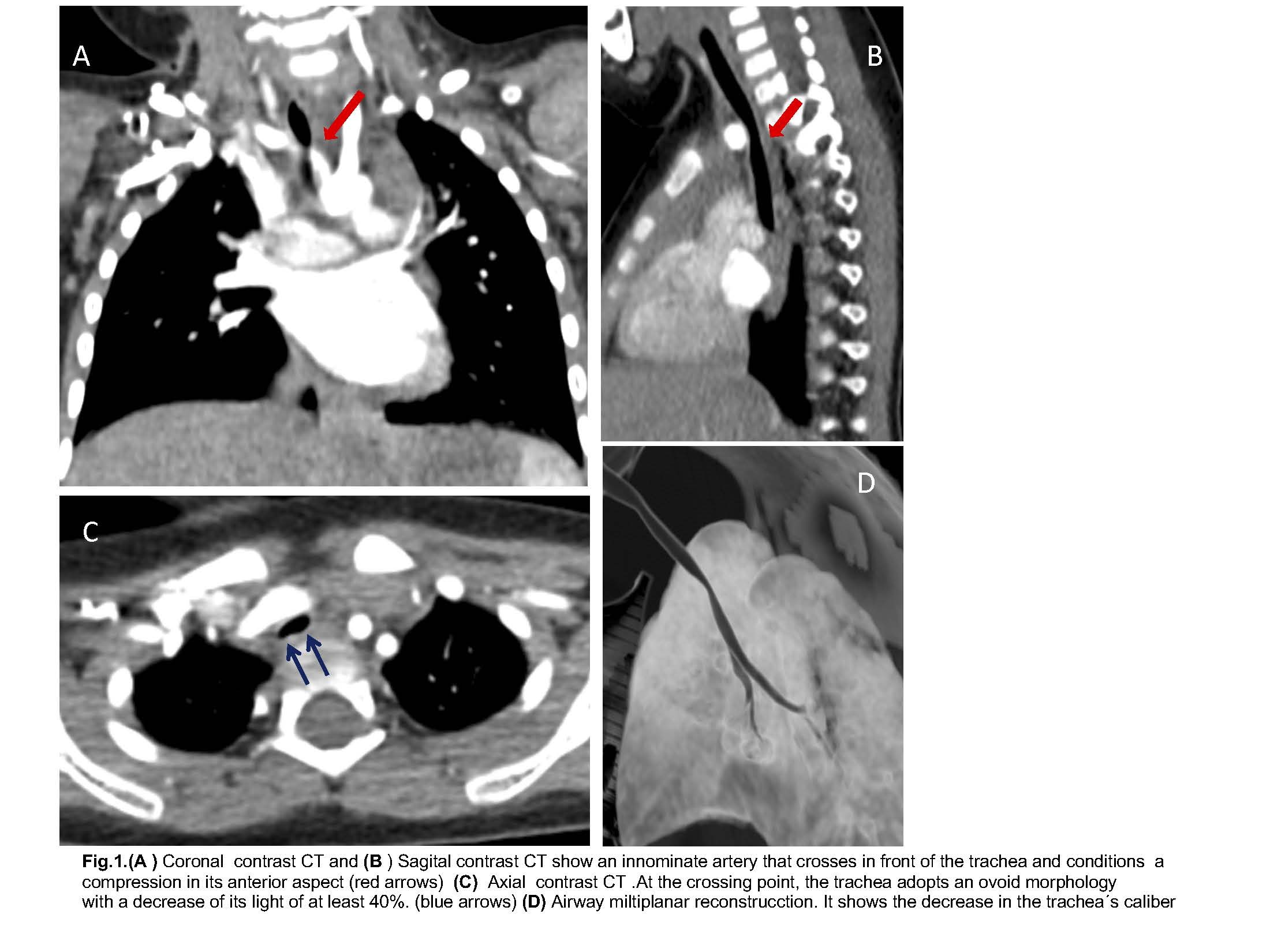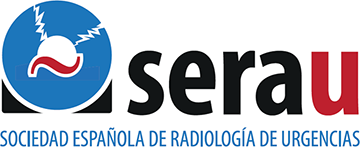Hospital: COMPLEJO ASISTENCIAL UNIVERSITARIO DE SALAMANCA, COMPLEJO HOSPITALARIO UNIVERSITARIO DE OURENSE.
Nº: C2019-646
Aut@r o Autores: M.T. Garzón Guiteria, C. Gonzalez Donadeo, P. Garzón Guiteria, P. Arias Rodriguez, P.C. Carreño Moran, J.M. Garrido Pedraz.
Presentación
An 18-month old male patient with biphasic stridor which gets worse with crying and movements, accompanied by intense dyspnea. A chest contrast CT is performed that shows a prominent innominate artery that from the origin in the aortic arch adopts an oblique path from left to right, crosses in front of the trachea an conditions a compression in its anterior aspect. At the crossing point, the trachea adopts an ovoid morphology with a decrease of its light of at least 40%. Bronchoscopy confirms a stenosis in buttonhole in the trachea by extrinsic compression in the right anterolateral wall.
Discusión
Aberrant innominate artery syndrome is included within the congenital vascular anomalies of the aortic arch, with an incidence around 1-3%. The innominate artery is born of the aortic arch at a more distal point of the usual, crosses in front of the trachea and compresses, only on tis anterior side, constituting an incomplete vascular ring. Although a large number of patients do not have symptoms, it can cause stridor, dyspnea or cough and coexist with other congenital anomalies such as tracheomalacia more frequently and to a lesser extent, gastroesophageal reflux, asthma or bronchial hyperreactivity. The bronchoscopy allows to assess stenosis in the airway, but is the CT with contrast and multiplanar reconstructions which helps to assess not only the caliber of trachea but also the relationship with the adjacent vascular structures and the state of pulmonary parenchyma. Treatment can be conservative if the stenosis is less than 70% or surgical ( aortopexia) when it is greater than 70% and the symptomatology is severe and does not respond to conservative treatment. In our case, despite the intensity of the symptoms, the response was favorable to conservative treatment.
Conclusión
The innominate artery of aberrant birth, constitutes an incomplete vascular ring that compresses the anterior face of the trachea.It usually does not cause symptoms but sometimes produces, as in the reported case, stridor and persistent dyspnea that require early diagnosis. We should think about this entity before the suspicion of airway anomaly. The CT with contrast and multiplanar reconstruction is an excellent diagnostic tool that complements the fibrobronchoscopy
Bibliografía
- Nayar S, Moënne K, Pérez C. Tracheal compression síndrome by innominate artery: clinical-radiological cases. Chilean Journal of Radiology. 2015, Vol 21: 54-57. - Gardella C et al. Tracheal compression by aberrant innominate artery: clinic


